In 1980, Edelweiss Bike Travel started as a dream shared by Werner and Coral Wachter. From that first tour over 40 years ago, Edelweiss has become the gold standard for guided motorcycle tours in Europe and other destinations worldwide.

By Keith Dowdle | Photography by Brittany Dowdle
In our household, it’s been a legend and a dream for 20 years—someday, someway, we would take an Edelweiss tour. So, when we reached our 20th anniversary—over two decades together riding two-up on everything from a Honda 919 to an Africa Twin 750 to our second (and current) BMW R 1250 GSA—we knew it was time to make this dream a reality.
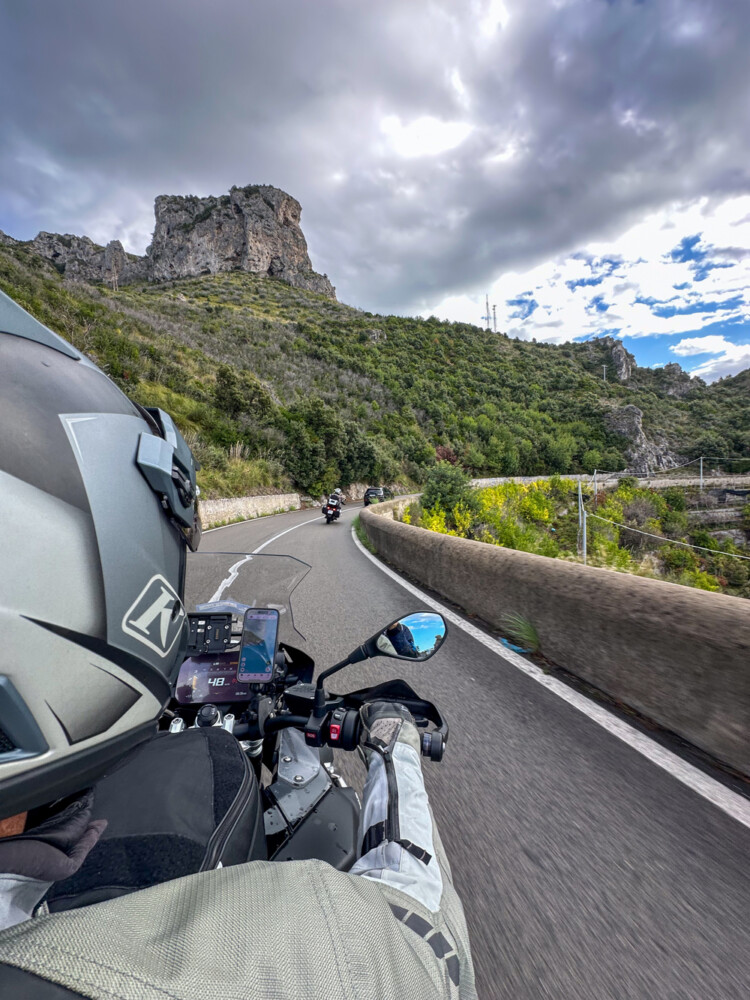
Delights & Twisties
Enter the Southern Italy Delights & Twisties tour—a 12-day tour starting in Florence, riding along the mountainous spine of Italy, and ending in Bari. As a “Classic”-level tour, it featured comfortable middle-class hotels and Edelweiss’s signature chase van, which shuttles your luggage from hotel to hotel so you can focus on riding, not logistics. Every Edelweiss tour has a rating system so you can choose which combination of skill level, riding time and sightseeing you’d like to experience. There are also different kinds of tours (such as Classic, Adventure, Royal, RIDE4FUN, Training, E-Bike, self-guided and custom), plus Edelweiss also rents bikes directly from its fleet. Whatever your moto-touring dream looks like, they’ve got an answer.
Our tour was rated a four out of five for difficulty, a three out of five for travel time per day, and a three out of five for sightseeing. Since this was our first Edelweiss tour, we didn’t know how these ratings would translate into real life. I’ll talk about the riding time and sightseeing later, but what does a “four of five” mean for “difficulty” in Southern Italy? Be prepared for lots of steep, tight switchbacks, occasional gravel, and all kinds of variable road surfaces. Southern Italy’s infrastructure doesn’t seem to receive the same level of budgeting and care as the North’s, and this tour visits wild, remote areas that are geologically active. If that’s your jam, you’re probably used to (and enjoy) the kinds of roads that go along with it. Whatever your dream tour would be, take advantage of the Edelweiss rating system—it’s a great resource.

The Southern Italy Delights & Twisties tour begins in Florence, and since we’d never been there before, we flew in a couple of days early to get acclimated to the time change and to do a bit of sightseeing in this historic city known for its culture and art. While most Edelweiss tours have a minimum of six bikes, not including the tour guides, there were a couple of last-minute cancellations for this tour, and so we ended up having five riders, which equated to three bikes (since we had two couples).
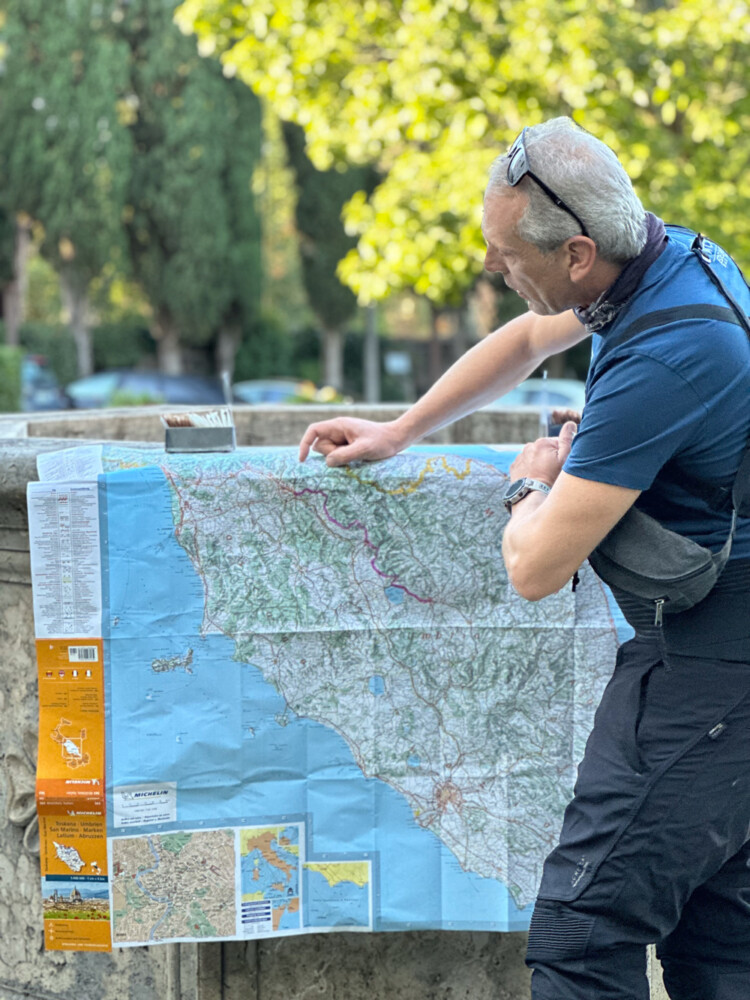
And So It Begins
Our first official day started at an elegant four-star hotel just outside the city center in Florence. We met that afternoon for introductions and the first of many route and safety briefings. Everyone was anxious to go check out our new bikes. Michaela, an eight-year Edelweiss tour-guide veteran from Germany, reviewed some of the best practices for riding in Italy—and as a group—and also gave us a heads up on some things that would be different from what we were used to in the USA. For instance, filling up at gas stations can be a little tricky if you’re not fluent in Italian touchscreens, and it seems like every gas station has a slightly different process for whether you pay first or fill up first—and what forms of payment are accepted.
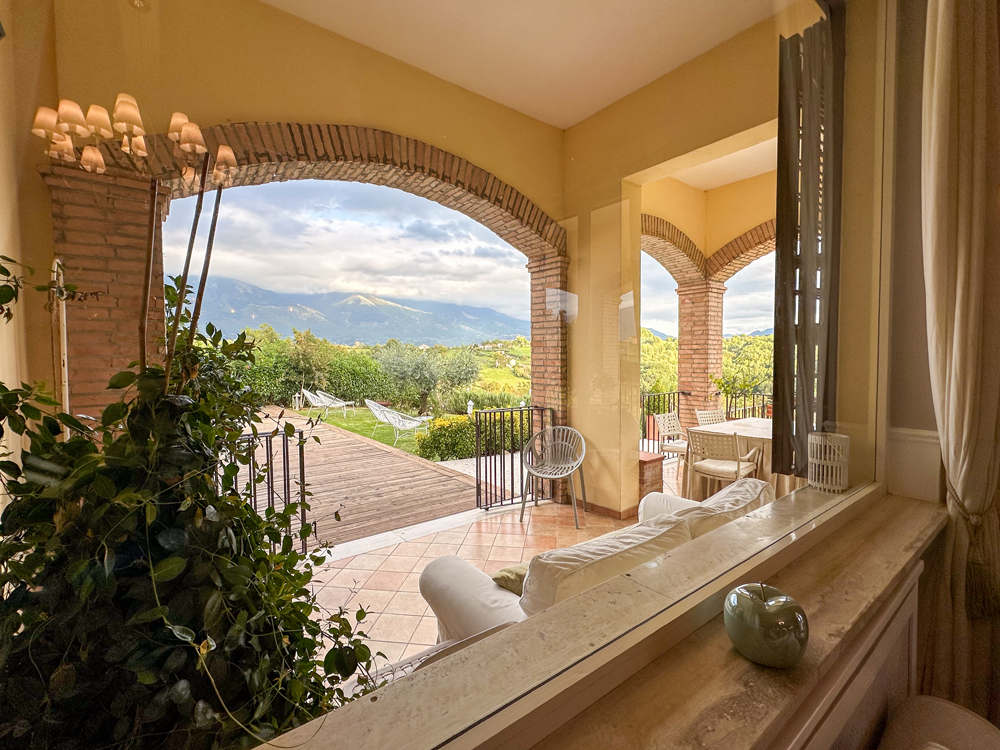
Domenico, our lead guide with more than 12 years of experience guiding and the architect of the tour we were about to embark on, said something that became a theme throughout our tour. When discussing how motorcycles and cars interact in Italy, he said that he didn’t anticipate that we would have any difficulties because drivers are not aggressive toward motorcycles there. That was the first of many perspective shifts that we experienced on this tour. The realization that in Europe, or at least Italy, motorcycles are a means of transportation—and they are well integrated into the fabric of the community.
While the USA has a history of having a certain amount of discrimination against motorcyclists, that is not the case in Italy. Bikes are a passion for many people, and we spent our fair share of time drooling over Ducatis and spotting old classics still on the road and gassing it around, but in Italy motorcycles are also just a basic means of transportation for everyday people—whether that’s someone in a cobblestoned mountaintop village or the businesswoman on her way to the office in Rome. Motorcycles are everywhere, and there is a sense of camaraderie, acceptance and safety that we have never felt riding in the USA.
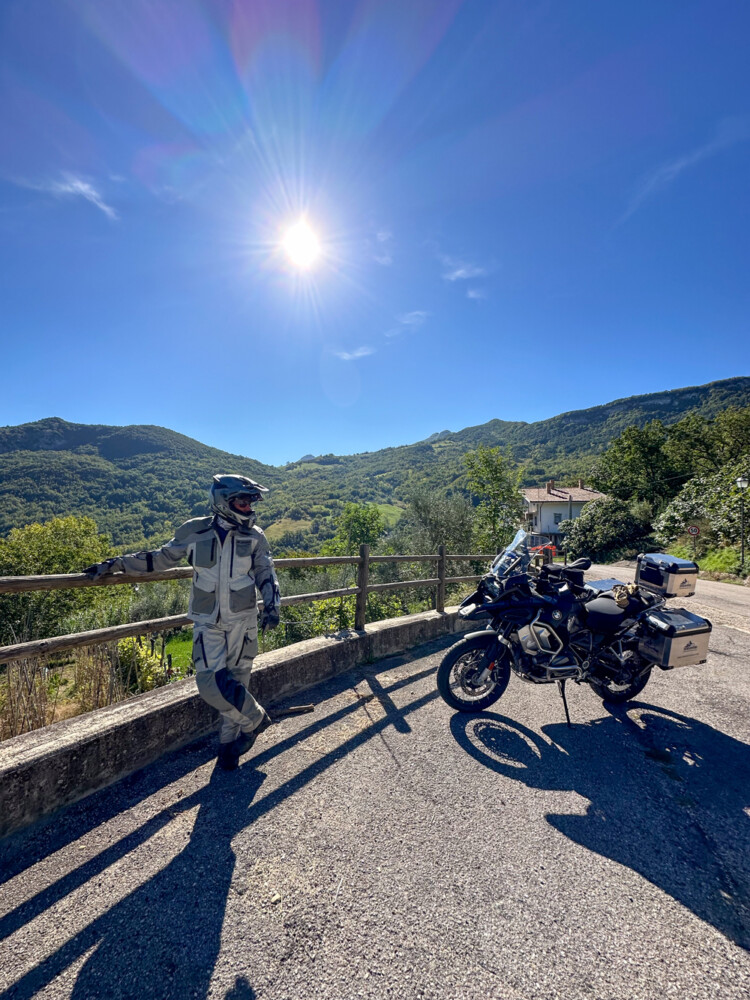
Our Kind Of Routine
From the first day of our tour to the last, we followed a basic routine: breakfast, which was included with our hotel stays, at 7:30 a.m., then luggage at the van by 8:15, when we would also have our daily ride briefing. This is when the guides, who took turns leading the group and driving the van, would review our route on a map and highlight specific stopping points and the day’s itinerary. At 8:30, we would be geared up, on the bikes, and ready to ride.
Each day, we would stop for espresso/cappuccino and a cornetto around 10:30 a.m. Edelweiss had already scouted out the best, most scenic, and delicious coffee stops, so we always had a specific destination in mind. That said, Domenico and Michaela were great at adjusting to conditions on the ground, so if the little mom-and-pop coffee shop happened to be closed, they had a tasty alternative lined up. We would also make several scenic/photo stops throughout the day—some were culturally significant locations, like Lake Trasimeno, where Hannibal’s forces ambushed the Romans in the Second Punic War. Or the desolate landscape of one of Bud Spencer’s famous spaghetti Westerns (if you know, you know). Other stops allowed us to pause and take in the beauty.
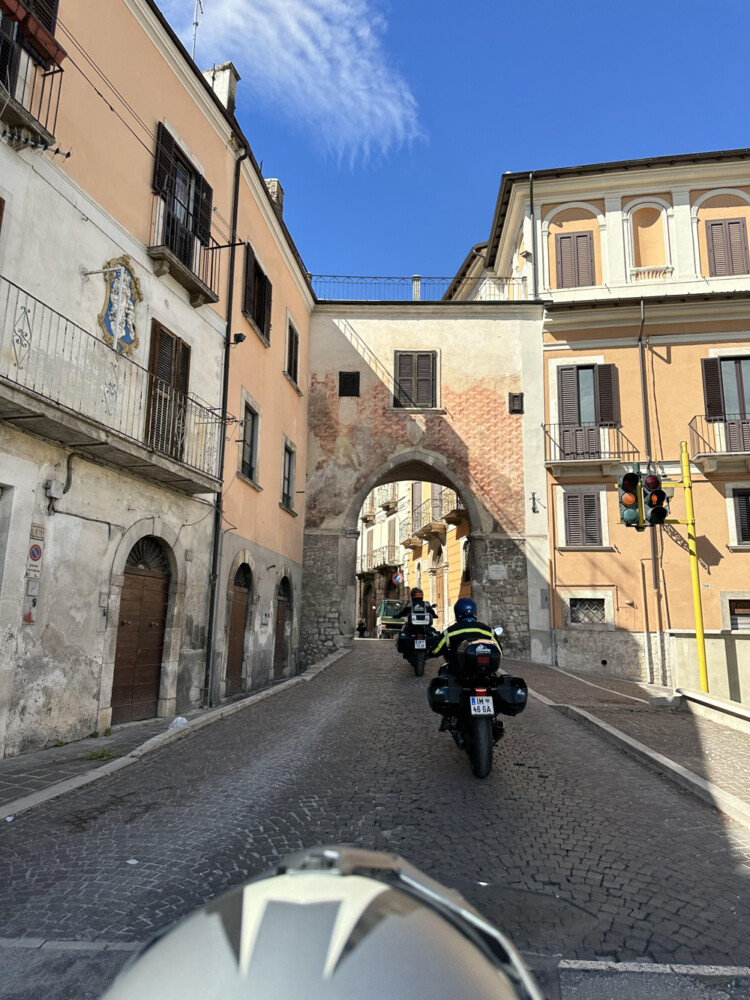
Lunch was usually around 12:30 or 1, and the afternoon brought more sightseeing stops or a (phenomenal) gelato break. We would roll into our evening accommodations around 5:30 or 6:00. When we arrived at the hotel, everyone’s bags would already be in their rooms, and after a quick celebratory end-of-day drink, we would go get cleaned up and then meet for dinner at 7:30. The routine started all over again the next morning with breakfast, and off we’d go for another exciting day of riding.
This basic daily routine helped keep everyone on track and provided a nice sense of stability while changing hotels most nights. During the tour, we stayed at eight different hotels—from a 14th-century castle in Perugia to a cliffside inn overlooking the Mediterranean in Furore to an “albergo diffuso” (rooms in carefully restored homes in the fortified medieval village of Santo Stefano di Sessanio). At three of the tour hotels, we spent two nights, with a full day in between, which was called a rest day, open for us to use as we pleased. For the most part, we all took advantage of the awesome rest-day itineraries that Edelweiss had planned. Each rest-day hotel was located close to important cultural or scenic venues, so it was hard to resist the lure of more riding.
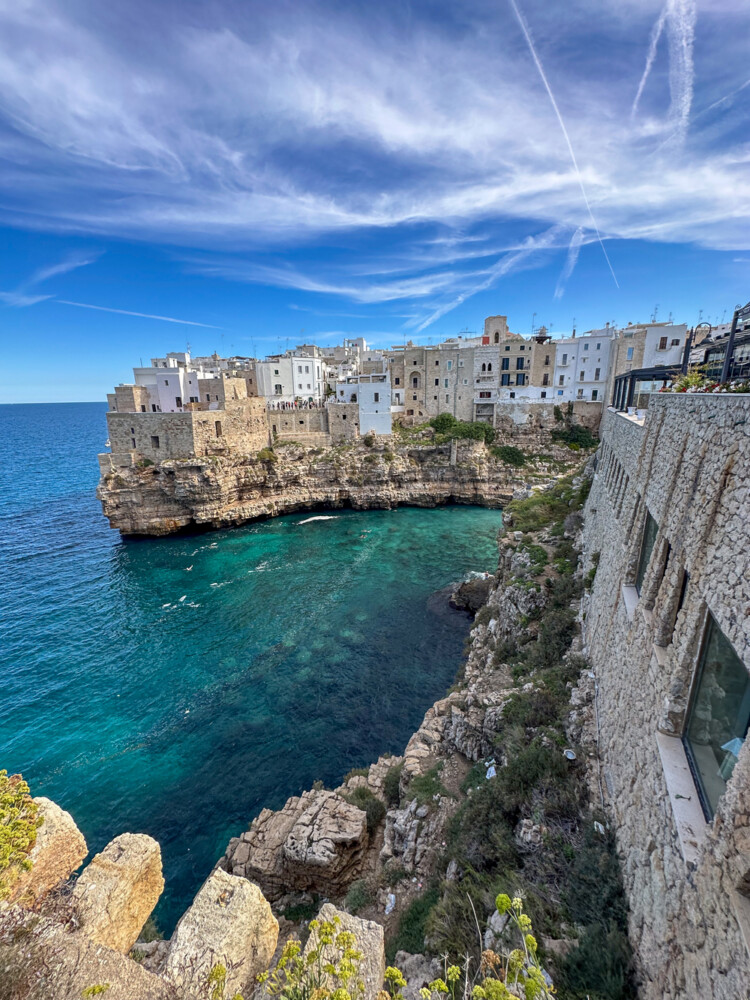
(It’s Really About The Food)
As much as this was a motorcycle tour, it was also a foodie delight tour. Every restaurant, coffee stop and hotel breakfast was delicious. By the way, “breakfast” is such a weak, prosaic word for the amazing spreads laid out for us each morning of the tour. Local honey on the comb? Check. House-baked pastries featuring heritage recipes unique to the region? Check. Fresh ricotta, cured meats, homemade yogurt fruit grown onsite? Check. And of course, the best espressos you’ve ever sipped. There’s a reason for the saying la dolce vita, and it starts every day with breakfast.
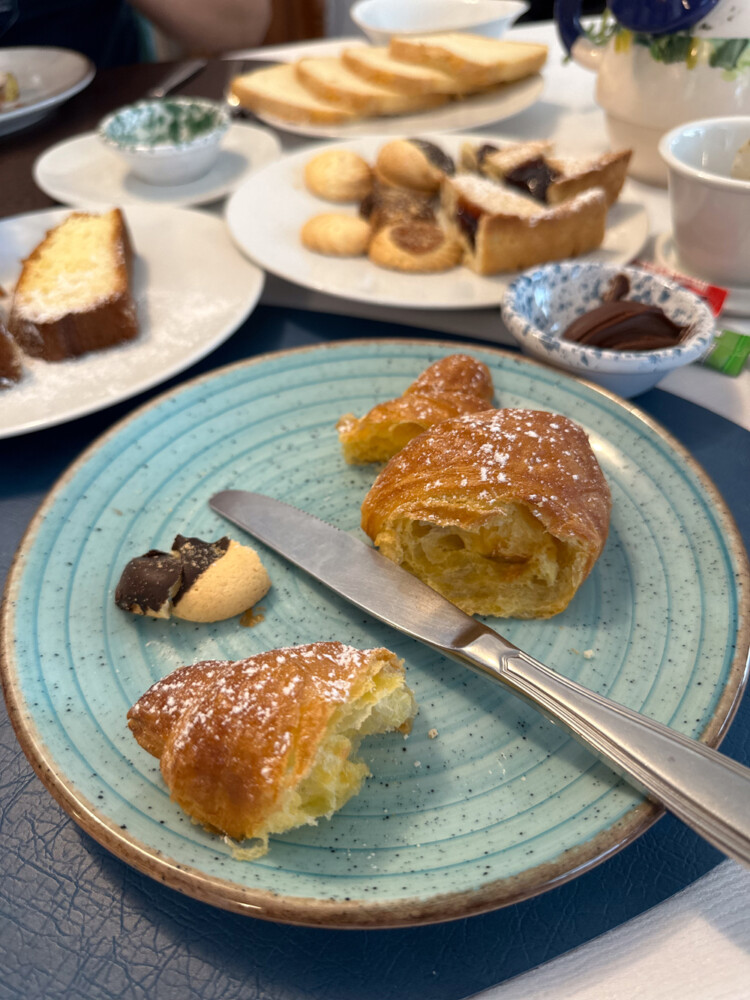
The dining experiences varied from the Michelin Guide dinners we had at Bacco Furore on the Amalfi Coast to the lovingly prepared feast in Morano Calabro. Just as many of the hotels we stayed at held historical or cultural significance in their specific community, most of the restaurants featured locally produced specialties specific to each region we were in. It was clear that it was important to both Edelweiss and our hosts to give us the opportunity to experience a unique and meaningful part of the local culture. We were particularly impressed by Edelweiss’ effort to support local businesses and have a sustainable, respectful approach to tourism—being mindful of how it affects these communities.

Carrying On
As we followed the Apennine Mountain range, the 870-mile-long spine of Italy, it became apparent that the 60 million tourists who visit Italy each year were somewhere else. Hundreds of miles to the north, bottlenecked in the Alps with their selfie sticks? Ninety miles west of us—and a world away—in Rome? Sloshing through flooded piazzas in Venice? Who knows. We were riding in open country, unspoiled and remote. This is what we love, what we seek out when planning our rides, so it was perfect for us. The itinerary twisted through narrow village roads, across abandoned badlands, along bejeweled coastlines, and through majestic national parks.
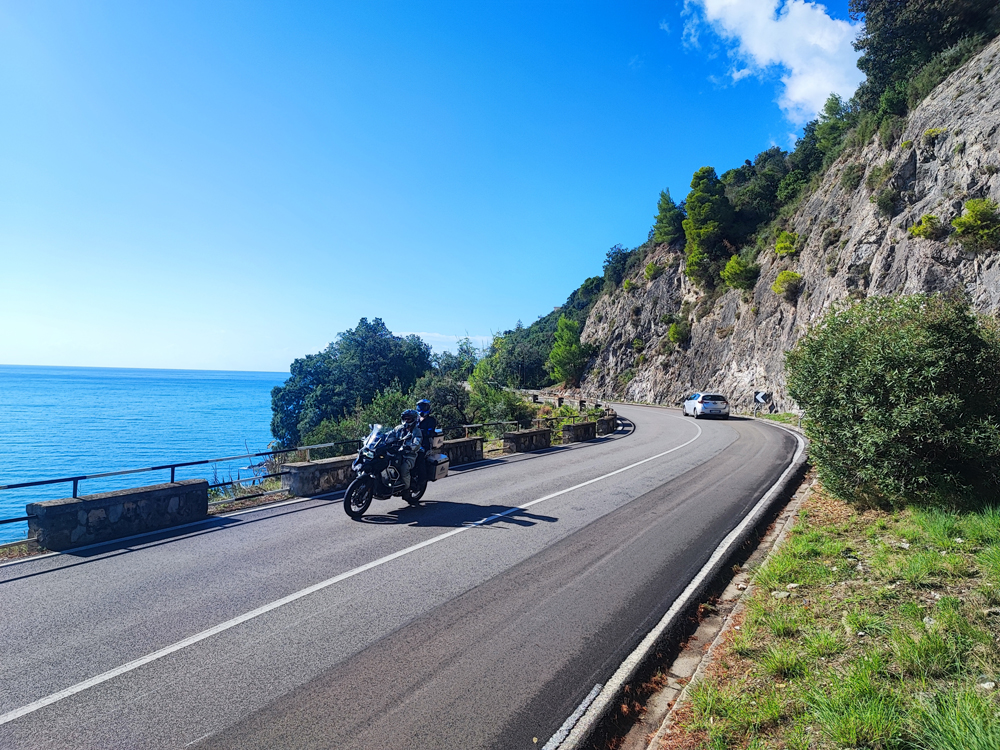
When we started the tour, we had no idea how many varied landscapes we’d see—or how massive the mountains that make up the Apennines are. One of our favorite days was actually a “rest day,” where we were free to relax at the hotel or do our own thing—but no one could resist the route Domenico had planned, so from the medieval village of Santo Stefano di Sessanio we headed out to see the Gran Sasso (Big Rock) d’Italia, a massif in Abruzzo with its highest peak, Corno Grande, at 9554 feet tall. It was a long day of riding—made longer by random road work delays—but it was perfect in its own way. From the horses that roamed the lonely valleys surrounding the Gran Sasso to the way local motorcyclists used the occasional roadblocks as an occasion to hop off their bikes and pick porcini mushrooms for dinner, it felt like another world we were privileged to experience.
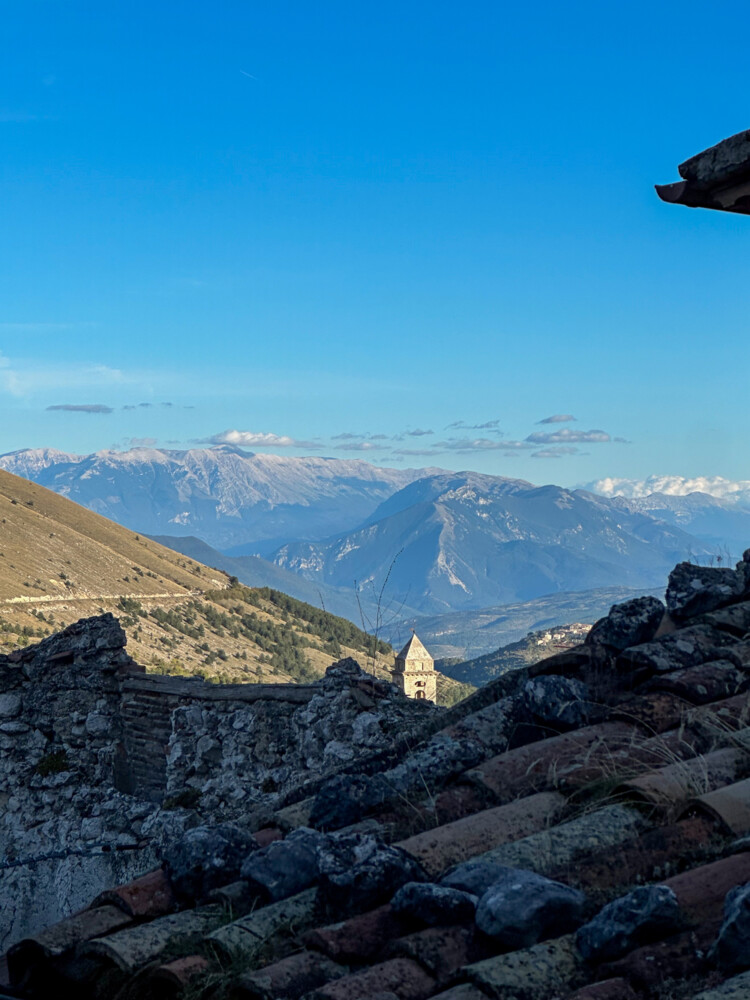
As the tour progressed, we appreciated how flexible and accommodating our guides, Domenico and Michaela, were. Edelweiss tours are definitely not a one-size-fits-all experience but are customized to make sure everyone gets the most out of this not-insubstantial investment. For instance, on the day we rode from Comino Valley, near the Abruzzo National Park, to the Amalfi Coast, we would be passing within about 30 miles of Monte Cassino. Cindi and Steve, the other two-up couple on the tour, are huge World War II history buffs, so, with everyone onboard, we slightly shifted our itinerary for the day and visited the painstakingly reconstructed site of the historic Catholic monastery that was bombed by the Allies in 1944. Everything in Italy seems to be steeped in history, and the emotional resonance is pervasive. From Monte Cassino to the trulli of Alberobello to the cave dwellings of Matera, beauty blends with the awareness of thousands of years of human habitation and all that entails. We loved that this carefully curated tour let us experience that very authentic side of Italy.
Worth The Wait?
It may have taken us 20 years to get there, but now that we’ve experienced the adventure of an Edelweiss tour, there’s no way we can wait another 20 years. And if you’ve been thinking about a tour, don’t put it off. Whether you’re looking for a luxury trip high on sightseeing, an intense off-road ride that will put your skills to the test, or you want the freedom to explore on your own (but with Edelweiss’s considerable experience and connections at your back), there’s a perfect-for-you dream ride just waiting.CN
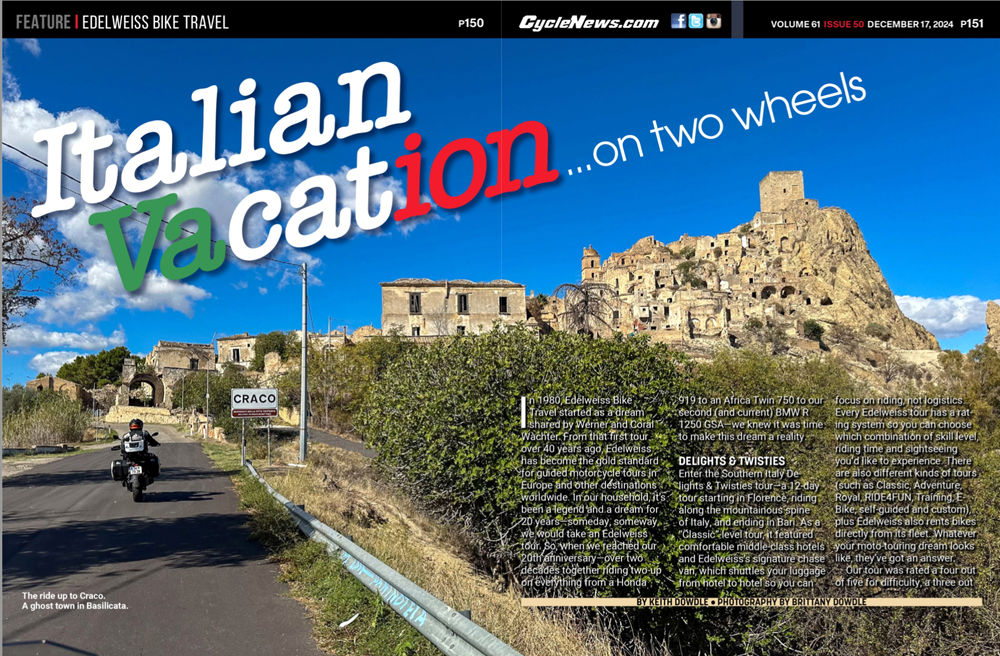
Click here to read the Edelweiss Bike Travel in the Cycle News Digital Edition Magazine.

